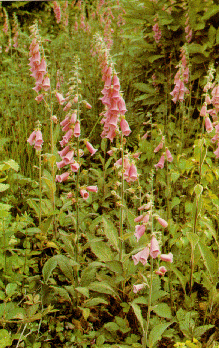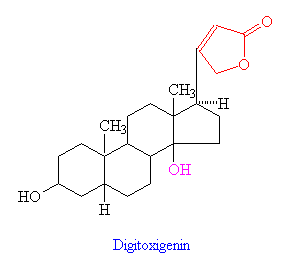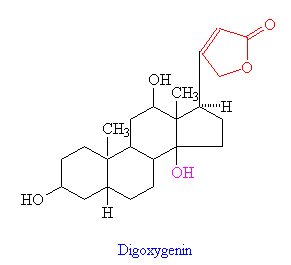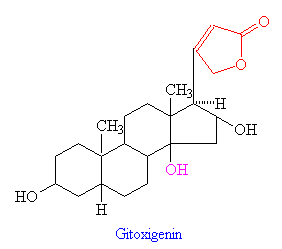A fascinating discovery with consequences until today........... a secret known to a gypsy in the 17th century in Scotland
Below I send you from the Internet a well written short story about a famous medical plant until today used in cardiology [maybe less than some 30 years ago]
Digitalis
Digitalis is an example of a cardio-active or cardiotonic drug, in other words a steroid which has the ability to exert a specific and powerful action on the cardiac muscle in animals, and has been used in the treatment of heart conditions ever since its discovery in 1775.
The discovery of digitalis is accredited to the Scottish doctor William Withering, and makes for quite an interesting historical story. While working as a physician in Staffordshire in the 16th Century, his girlfriend got him interested in plants and botany - so much so, that in 1776 he published a huge treatise, whose title begins 'A botanical arrangement of all the vegetables growing in Great Britain,...' and goes on for a further 24 lines! By the age of 46 he'd become the richest doctor outside of London, and bought Edgbaston Hall in Birmingham, which is now Edgbaston Golf Club. Another of his claims to fame is that he owned the first water closet in Birmingham!
In 1775, one of his patients came to him with a very bad heart condition and since Withering had no effective treatment for him, thought he was going to die. The patient, being an independent type, went instead to a local gypsy, took a secret herbal remedy - and promptly got much better!
When Withering heard about this, he became quite excited and searched for the gypsy throughout the by-ways of Shropshire. Eventually he found her, and demanded to know what was in the secret remedy. After much bargaining, the gypsy finally told her secret. The herbal remedy was made from a whole concoction of things, but the active ingedient was the purple foxglove, digitalis purpurea. The potentcy of digitalis extract had been known since the dark ages, when it had been used as a poison for the mediaeval 'trial by ordeal', and also used as an external application to promote the healing of wounds. There are also reports of digitalis extract finding some use in the treatment of dropsy.
 The purple foxglove, digitalis purpurea.
The purple foxglove, digitalis purpurea.
So, Withering tried out various formulations of digitalis plant extracts on 163 patients, and found that if he used the dried, powdered leaf, he got amazingly successful results. He introduced its use officially in 1785.
Even today, drugs based on digitalis extract, such as Digitoxin and Digoxin, are some of the best known treatments to control the heart rate. It works by increasing the intensity of the heart muscle contractions but diminishing the rate, and doses as low as 0.3mg daily are all that is needed. Since digitalis purpurea contains a mixture of several cardiac glucosides and also several saponins in amounts and proportions which vary with locality and with season, digitalis preparations vary considerably in potency and quality. Because of this, and the fact that the therapeutic dose is so small, it is very easy to exceed the safe dosage. Indeed, Withering recommended that the drug be diluted and administered repeatedly in small doses until a therapeutic effect became evident. This procedure was very effective in experienced hands, but was also very time-consuming. Nowadays, therefore, preparations from digitalis leaves are made using modern recrystallisation methods and are carefully standardised by bio-assay.
Hydrolysis of digitalis produces three major aglycones or genins, a,b-unsaturated lactone ring (cyclic ester, shown in red) in addition to other structural similarities. Both the C14 b-hydroxyl group (shown in magenta) and the unsaturated lactone are essential to its activity as a drug.



In 1799, Withering became very ill and it looked as though he was going to die. One of his friends, who was noted for his black sense of humour, commented 'The flower of Physic is withering...' - a clever, if somewhat tastless, pun. And when he finally died, his friends carved a bunch of foxgloves on his memorial.